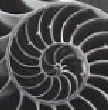
Problems for
Intermediate Methods in Theoretical Physics
Edward F. Redish
 |
Problems for |
| When we consider the properties of a spring, we typically imagine an ideal spring, which perfectly satisfies Hooke's law, T = k Δs. (I like to read this: if you pull on the opposite ends of a spring with a tension, T, the spring's length will change by an amount Δs, proportional to T with a constant k that is a property of the spring.) In actual fact, this is an awful approximation for most extensions or compressions of the spring. What we typically do is stretch the spring some amount beyond its rest length, say by hanging a weight from it. For small displacements around that equilibrium position, the extra force exerted by the spring is linear around the resting point: "F = -kx." |
 |
Sketch a graph of how the length of the spring varies as a function of T, considering both positive and negative values of T and going to very large values. Make plausible guesses for the values of the length when unusual things happen. Identify the "Hooke's law" regimes and identify salient features of your graph, described what is happening at those salient points.
Solution
| The spring shown looks pretty stiff and is tightly coiled. This means that if I try to compress it (use a
negative tension), there is no loose space between the coils to compress. As I start to press, I immediately
encounter what is basically a solid block of steel. Any forces I can exert, even with lab equipment I might
reasonably expect to get my hands on would result in no measureable reduction in the length of the spring. This
is represented in the graph as region I. When I start pulling on the spring, it begins to stretch, the coils opening out. The metal is deforming very little in order to produce some opening between the coils. This is the region we usually describe by Hooke's Law: the stretch is proportional to the tension. I would expect to be able to pull the spring out to about twice its length before I started having to deform the coils. This is represented in the graph as region II. Once I get beyond that length, I have to start deforming the coils. I expect that this will take more force per extra bit of extension. How far can I stretch it? When I have stretched it fully out, I will have basically a single uncoiled straight wire. The coil seems to have about 30 rings and its diameter is about 1/5 of its length, 1 cm. This means each ring has a length of about 3.14 cm so the total length of the spring when uncoiled should be about 100 cm. This is shown in region III.
|
 |
| University of Maryland | Physics Department | Physics 374 Home |
|---|---|---|
 |
 |
 |
Last revision 4. October, 2005.